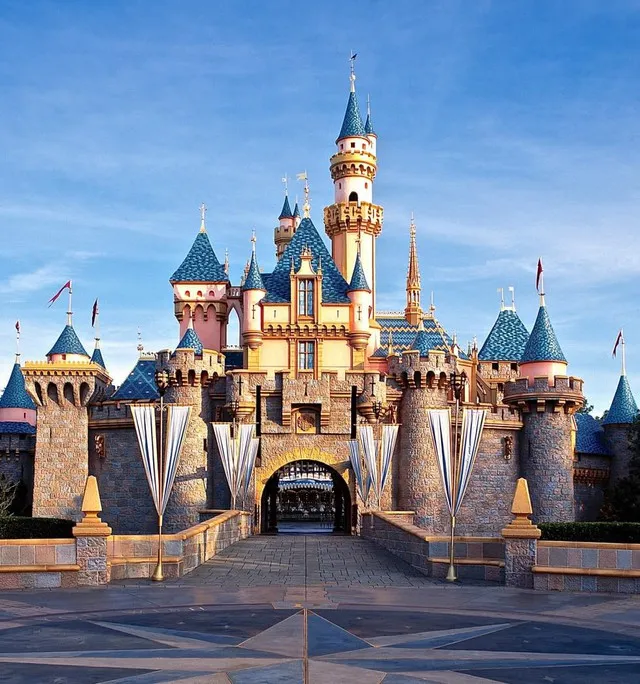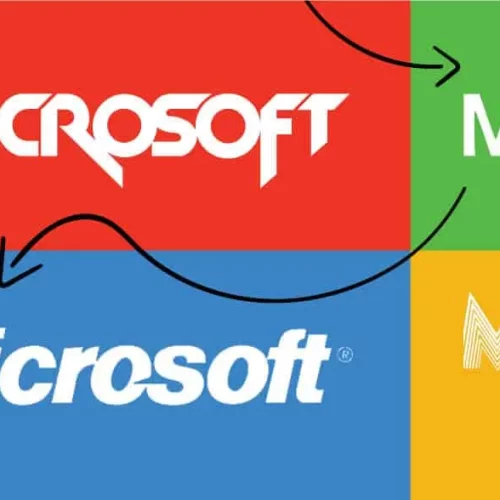
Known as a “happy land” for millions of customers around the world, Disneyland always makes visitors satisfied with unique experiences. To create that success, Disneyland has always persevered with a special set of hidden rules, built on important principles of human psychology. Let’s learn about the special principles that have created the success of Disneyland’s happy land in the article below!
Disneyland is the first amusement park under the Walt Disney Company, a place that embraces the childhood dreams of people who love Disney movies and those who love discovery. In 1954, Walt Disney did something considered crazy. When a filmmaker was at the peak of his success, he paused his production activities and decided to create a theme park. Disney purchased 160 acres of land in Anaheim, California, and began building Disneyland.
With his ambitious ideas, Walt Disney gathered a group of “creative engineers” – Imagineers to turn those ideas into reality. During the construction of Disneyland, the Imagineers team created a set of rules to optimize the customer experience.
These principles were compiled into “Mickey’s Commandments” proposed by Imagineer Marty Sklar, which later became the key to creating a brand that makes people dream. Importantly, these principles reflect the power of drawing on deep psychological principles.

1. Understand your target customers
Walt Disney’s idea for Disneyland came from a visit to Griffith Park in Los Angeles with his daughters. He felt disappointed because while his children were playing on the ferris wheel he had to sit alone on a bench.
At that time, the rides in the park were only for children and there was nothing for adults to do but wait. That experience suggested to Walt Disney the idea of an amusement park where the whole family could join in the fun.
Walt Disney was lucky because he clearly understood his customers – That was him, a person who had to sit alone on a park bench, eating popcorn instead of having fun with his daughter. However, when he started building Disneyland, he gradually stopped putting himself in the role of a regular customer.
Walt Disney understood that empathizing with customers’ desires would become difficult as Disneyland grew. He also realized if the Imagineers team only focused on creating rides and park amenities based on personal preferences, they would not focus on meeting customers’ real needs.
Why is understanding your customers so important?
One of the main reasons is a psychological principle called the Hot-Cold Empathy Gap, which describes our difficulty in predicting our future behavior, due to our psychological state when The prediction often differs from the actual state upon experiencing the event. This principle is often explained through the difference between a “cold” (unemotional) state and a “hot” (highly emotional) state.
In the context of Disneyland, this effect can be explained as follows:
When Disneyland’s design team is “cold,” they are designing experiences for customers without a full understanding of the emotions and psychological states that customers may be experiencing. when participating in activities in the park. In this state, they may rely on theory and data without truly feeling their customers’ emotions.
When experiencing emotions, such as facing long queues, heat, or the excitement of participating in a game, the design team will be in a state of “heat.” This state gives them a more realistic view of the challenges and joys that customers can experience.
Experiencing these emotional moments helps the design team better understand the customer’s needs and wants. This can lead to the creation of authentic park experiences that reflect what customers actually experience, and thus improve the customer experience.
2. Put yourself in the customer’s shoes
Empathy is an important skill in design. Designers will easily recognize the problems their customers encounter if they have experienced similar situations. That’s why Walt Disney asked his Imagineers to visit Disneyland at least once every two weeks and line up like regular customers.
Why is it so important to have empathy – to put yourself in the customer’s shoes?
It is related to a psychological effect called False consensus effect – False consensus bias. This principle describes the human tendency to think that our beliefs, behaviors, and thoughts are more common in the general population than they actually are. In other words, we think that what we like is liked by others.
In the context of Disneyland, this effect can be explained as follows:
Imagineers, the people who design and develop park experiences, visit them regularly to empathize with customers and also check whether the experiences they create are more or less popular. more favorable than their estimate.
For example, if an Imagineer doesn’t like a fruit-flavored ice cream, they might think that most people won’t like it either. However, by observing and checking reality in the park, if they notice long lines of people standing in line to buy that ice cream, they must reconsider their point of view and consider how to make that product. becomes more important in the park experience.
Therefore, the False consensus effect has an important role to play in ensuring that designers better understand the actual desires and assessments of diverse customers, instead of assuming that people have similar tendencies. share their personal views and interests.
3. Create stories
“Great stories and memorable experiences have a logic and a sequence to give the customer, traveler, or reader value for their time and effort.” — Marty Sklar, Imagineer
Walt Disney knew that his park didn’t just need to be fun – it also had to be easy to understand. He believes that a well-organized, logical park will bring a new and wonderful experience to customers.
Therefore, in each game at Disneyland there is always a clear plot to create information for the audience and then proactively lead players to unpredictable changes.
This is a bias called Narrative Bias, which describes the human ability to understand information and events when it is incorporated into a story structure. People like stories that have meaning and logic, and therefore, when information or events are presented in story form, people can understand and remember the information better.
Because of this, Disney and its Imagineers have built a vivid world where every moment is part of a larger story. The stories make tourists feel like they are part of the magic.

4. Create a highlight (Weenie)
Weenie is a term used by Walt Disney to describe special features, usually large landmarks or prominent structures in the park that guide and attract the attention of visitors. Examples of famous “weenies” in Disney parks are Spaceship Earth in Epcot and Sleeping Beauty Castle
The psychology behind “weenies” is called Visual Salience. This is a psychological principle that explains how salient or emotional something is. If an element seems to “jump” out of its surroundings or stimulate emotions, it is said to stand out.
By making landmarks visually appealing – or naming them weenies – Imagineers can create easy experiences that make the visitor’s experience less stressful and more enjoyable.
5. Use images to communicate
Disney uses “visual literacy” to nonverbally communicate with customers in its theme parks. They choose colors, shapes, forms, and textures that fit the story and identity of each game. In addition, Disney also pays attention to how visual elements fit into the surrounding environment.
Using images to communicate helps stimulate positive reactions and stronger emotions in visitors. But why is it important to communicate using “visual literacy” when it is possible to use written words for instructions?
That’s because of a psychological principle called Picture Superiority Effect. This is the principle that people remember and understand images better than words. This allows visitors to navigate and enjoy the park with ease, creating an experience suitable for all ages, languages and abilities.
6. Maintain identity
This means keeping the brand consistent by creating a unified look and feel for the audience experience.
An example of this is Coca-Cola: The Coca-Cola logo has remained virtually unchanged for over a hundred years. Repetition makes the brand “imprinted” in the minds of customers.

Why is it important to create and maintain a consistent identity? That’s because of a psychological principle called Mere-exposure – The frequent exposure effect. This principle states that the more we are exposed to something, the more sympathetic we are to it. Therefore, consistent images, colors, and styles should be used for the target audience’s experience.

By consistently providing positive messages, Disney creates a positive environment that helps customers develop brand affinity and engagement. This can positively influence customers’ decisions when they choose entertainment and services.
7. Repay discomfort with joy
At Disneyland, one of the worst parts of the experience is waiting in line. But Disney’s Imagineers are so talented that they can make waiting in line fun.
For example, while waiting in line to enter the Spooky Mansion at Disney World, visitors will not be bored because they can play musical instruments, watch books fly off the shelves, and even solve a crime. network while waiting.
As MIT professor Dick Larson, who studies the psychology of queuing, said:
“You might have to wait 45 minutes for an eight-minute ride at Disney World, but they’ll make you feel like the ride has started while you’re still in line.”
This is also a psychological principle called Idleness Aversion – Aversion to idleness. This type of mentality holds that people are happier when they are busy – even when they are forced to be busy.
For example, when entering an elevator with a mirror, people will perform the routine of checking their hair or makeup while waiting for the elevator to reach the next floor. So why is that so? That’s because time passes faster when you’re distracted.
8. Maintain quality
To create a great experience for visitors as well as turn Disneyland into a “happy land”, Disney always focuses on the quality of everything in their parks. That means everything must be in working order, from the air conditioning to the cartoon characters. As Marty Sklar said:
“Poor maintenance is poor show. And poor show is unacceptable in the Disney experience.” – Poor maintenance is poor performance. And poor performance is unacceptable in the Disney experience.

Why is maintaining quality important? That is people’s thoughts about a phenomenon called Status Quo Bias – Status Quo Bias. This phenomenon suggests that when people get used to a “normal” experience, they will feel lost when there is a change.
When you create the best experience in the world, you are also responsible for protecting it. Customers will not accept anything less than perfection. Everything has to work smoothly, otherwise your experience will be rated much lower than others.
This is also the “disadvantage” of Disneyland when creating a wonderful experience, which means taking responsibility and protecting it to the end. Customers will not accept anything less than previous perfection.
Conclusion:
Disney relies on psychology and behavioral science to develop its own principles, not just at a theoretical level. Thanks to the creativity of Imagineers and the spirit of not being afraid to test bold and unique ideas, they have created Disneyland – the world’s leading amusement park, also known as “happy land” for businesses. huge revenue.



![[Case Study] Business strategy of Kinh Do company: Seeing Kinh Do means seeing Tet 7 317618900 3276501885896514 22895](https://maludesign.vn/wp-content/uploads/2023/08/317618900_3276501885896514_22895-500x500.webp)
